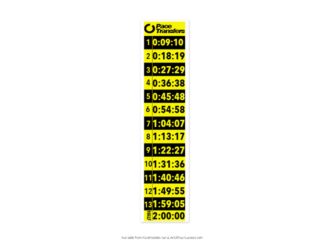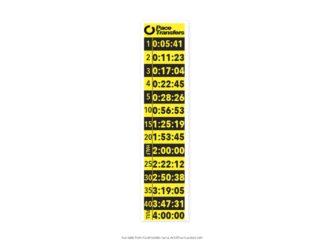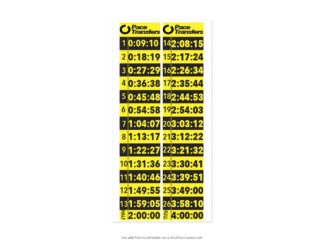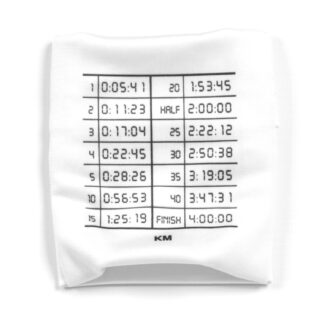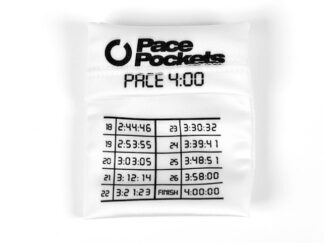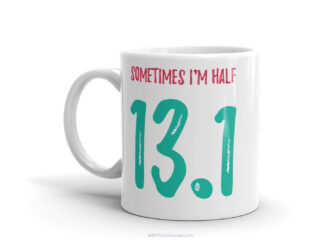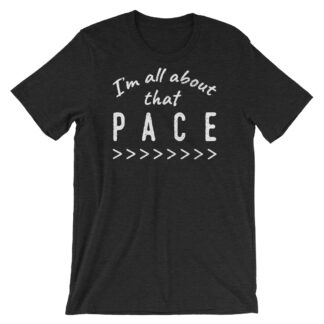
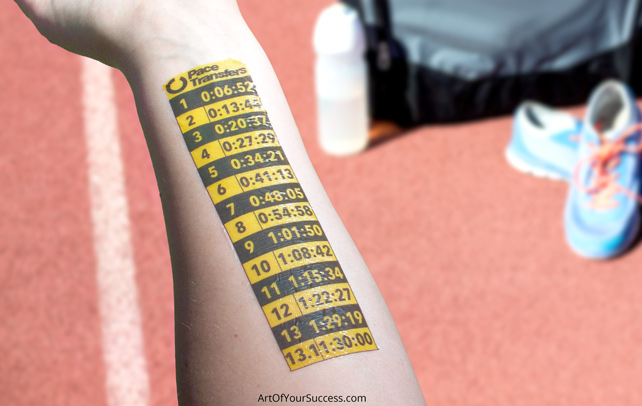
Why is pace and pacing important?
There’s a clue in the fact Eliud Kipchoge had a car and pacers running every mile at the same speed to run the sub 2 hour goal. Also that elite marathon runners have professional pacers, and many events provide pace groups. It’s because consistent pacing helps hit your target.
Knowing the end target helps you work out the pace you need to hit your goal while staying in control.
I just want to get round & finish. Do I need pacing?
Marathons aren’t easy to run but they are easy to get wrong! Many runners ‘hit the wall’ because they haven’t thought about pacing (or ignored it), and started off too fast.
Pacing isn’t all about fast times, it’s about controlling your effort. Pacing can help you avoid hitting the wall and slowing down as so many people do. Get it right and you’ll have a much more enjoyable marathon day experience. Who wouldn’t want that?! You train hard for months for this one day, it’s not something you want to throw away.
What happens if you start too fast?
This can happen to first time runners as well as experienced runners. We get too over-excited, feel good after resting in the taper, or think we can ‘bank time’. But starting too fast for our personal pace means we spend too much of our energy too soon, coming back to bite us painfully later in the race.
This is why people ‘blow up’, ‘hit the wall’ or slow down. If you’ve ever done this, you know it’s very unpleasant and want to avoid it. If you haven’t, be smarter, follow these tips and hit your goal in the most sustainable way.
Being sensible and patient may not sound exciting, but it can really pay off as you pass thousands of runners who are slowing down, and hit your goal at the finish!

How does pacing work? What is even pacing?
Even pacing, also known as even splits, means every mile or every kilometre is run at the same pace for the whole distance. So for a 4 hour marathon, every mile is run at 9:10 minutes per mile or every kilometre at 5:41 per km.
Most studies of runners have shown that an even pace is the best way to reach a time goal. This is why Kipchoge’s sub 2 was run this way, and why elite runners follow pacers to hit their goals.
What even pacing means in reality, is that the earlier miles will feel easier, as it is always more physically demanding to run the final part of a marathon. It is not even effort sadly!
But even pacing gives you the confidence to know that if you keep up this pace, that you will hit your time goal, and/or be much less likely to run out of energy before the finish.
What pace should I run?
You probably have a good idea from your training, what pace will be sustainable for you to run.
We don’t run the 100 metres at the same pace as we run the marathon. We have a range of paces that we naturally and practically pull out for different distances.
For how to predict your pace, particularly over the marathon distance, check out ‘How fast should you run?‘
How do I work out even pacing?
Even pacing doesn’t mean down to the millisecond, as we are humans, not robots. Here is where pace bands are useful, as they help you check regularly if you are on track for your target time as you run along a course.
Without pace bands, people try to rely on mental arithmetic to check if they are on time. This can in theory work, but gets increasingly difficult as you get more tired. I have definitely spent whole miles towards the end of a marathon, trying to add on my minutes and seconds, only to reach the end of the mile and still get it wrong!
Even pacing within a range
It’s impossible to hit every mile exactly on pace. Even Kipchoge didn’t hit the same exact time every mile. It’s very normal to have a range to aim to stay in.
So if you’re aiming for every mile in 8 minutes for example, a range of 7.50-8.10 would be in the range of hitting 8 minutes.
Wearing a pace band helps you deal with the range, as you check in on your total time at each distance marker (more on this below).
How do you know how to hit a certain pace?
Practicing in training is the best way to get used to what a pace feels like.
If you don’t have a GPS watch, you can measure a distance and time yourself on it.
You don’t need to run your whole distance in training at that pace, but getting used to what it feels like, will help you get it right on race day.
If for example, you’re trying to run at a pace that feels a bit harder than your easy runs, you will be breathing harder, and your heart rate will go higher as you run it. Recognising what this effort feels like for you, will help you lock into that pace on the day.
A practice race is a great way to test out your pacing too. The extra adrenaline plus the other runners around you, is a handy way to practice controlling your pacing to run at your speed and effort, within a race environment. I often see other runners set off faster, only to pass them later as they slow down, while even pacing gets you to the finish quicker.
Can’t my GPS watch tell me if I’m on pace?
Yes it can really help, but don’t rely 100% on just its pace data. Your watch is needed to use with your pace band, but it’s important to look at the right data.
Be careful not to rely on average pace per mile/ km. This is what most of us do in training when we don’t have race markers. But on race day, you need to check your time compared to the officially measured course markers on the ground. These will often not exactly match your GPS measurement of the same distance (the course markers are usually agonisingly longer than your watch tells you!)
If you rely on your GPS average pace, you will therefore often be disappointed to see your finish time is slower than you think.
How do pace bands work?
This is where pace bands help you get real. Every time you pass a distance marker on the course, you check your pace band, and check your elapsed time at the marker. If the time on your watch matches the time you pass the marker, you are on target. If you are ahead of the time, you are going faster than your target and vice versa.
If I run with a pace group, I won’t need a pace band?
If you run with a good Pacer, then yes, they should be able to pace evenly round the course to finish in your target time.
However, Pacers are only human and sometimes things can go wrong. They can get injured, or they can run a couple of miles too fast or too slow.
Having your own pace band means you can stay in control of your run and not be panicked if you lose the pace group.

Can I use a pace band on trail/ on a hilly course?
These pace bands have been designed to run even pacing, which is easiest on flat road courses.
You can wear them on trail/ hilly courses to hit a goal time if you use them as an overall guide, and take into account that some miles you run may be faster or slower. I have done this and found it helpful, but you just need to be comfortable with being faster or slower for some miles.
Anatomy of a pace band
The image below shows how to use your pace band.
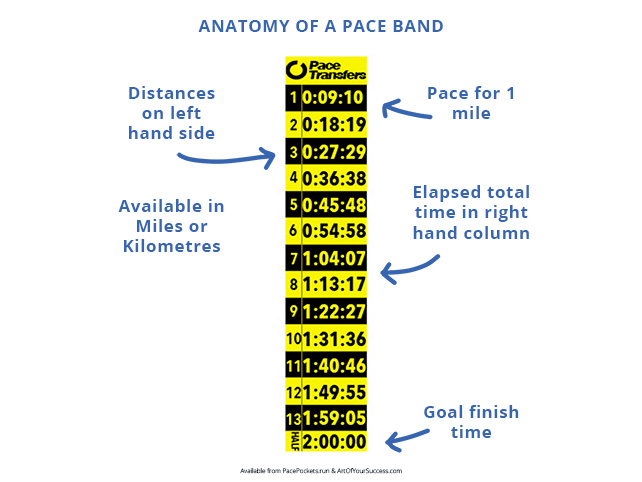
You can get pace band temporary tattoos or pace pockets here.
On the day
All you need to do is get out there and run!
Very best of luck hitting your goals.
Let us know your best pacing tips below and do share any stories of times it went wrong to help others get it right!

